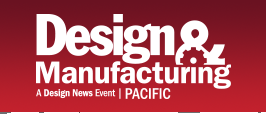On June 11th 2019, I received a press release announcing the launch of the Vocademy Maker Skills Academy (MSA) — a one-of-a-kind, hands-on skills training program. This intensive program covers many of the vocational, career, and soft skills that are no longer taught in our schools. The kinds of skills thousands of employers are seeking. The program is available to anyone over the age of 16, with no prerequisites, transcripts, or GPA requirements. The first ten-student MSA team starts July 8th, so enrollment is now open.
It is well documented that there is a massive skills gap in traditional and advanced manufacturing in America today. In past articles, I’ve mentioned that an estimated one to two million good-paying manufacturing jobs are going unfilled due to a lack of people with the right skills. There are also thousands of young adult makers looking for effective alternatives to college. The press release states: “An ideal solution has not existed …until today. This truly unique type program addresses the desperate needs of thousands of employers.”
In 2016, I wrote an article about Vocademy when it was essentially a traditional makerspace open to the public and beginning to offer skills training classes to high school students during the day. During that visit, founder and president Gene Sherman told me, “I started Vocademy because I had witnessed the demise of hands-on skills teaching in this country over the past 20 years. Schools have done away with these critical classes that taught practical life skills like woodworking and metal shop. These were the classes where people learned how to use tools and technology and develop the mindsets necessary to create new and amazing things.
When I saw ‘makerspaces’ springing up, I wanted to combine that type space with teaching the kinds of skills that were previously taught in ‘shop’ classes. I wanted to create a place for those who want to use their hands, in addition to their minds ? makers, inventors, and dreamers. I believe that if our country loses its ability to make and build things, we will have lost what made America great.
I wanted to provide access to these tools, but with proper and practical instruction on how to use them correctly and safely. I wanted a place that teaches the most state-of-the-art manufacturing techniques, not just traditional shop skills. I wanted to teach these important skills without the bureaucracy of academia because many more Americans should have the same opportunity to innovate, collaborate, learn, and create their dreams.”
I visited Vocademy, located in Riverside, CA,
on June 20th and interviewed Gene to find out more about the
transformation from a makerspace to a skills discovery and training center. Gene said, “Employers today are looking for
those with a breadth of hands-on and soft skills. They want generalists and not
specialists because the economy and workplace are changing at a rapid
pace. We have created the Maker Skills Academy to
meet the needs of a career-centric workforce. Our goals are to teach real world
skills, get our students career ready, and show them the amazing opportunities
in the world of making. We’re looking forward to changing lives and creating
the makers of the future. The program only takes six-months to complete. We do
this by including over 90 fundamental classes in real-world subjects,” such as:
- 3D Printing and Computer Aided Design
- Laser Cutting and Engraving
- Sewing and Textiles
- Plastics, Vacuum forming, and Composites
- Costume, Prop, 3D Papercraft, and Model Making
- Fundamental Electronics, Soldering, Raspberry Pi and Arduino.
- Robotics, Automation, and Hardware Programming.
- Machine Shop Basics and CNC machining
- Welding, Fabrication, and assembly
- Wood Working.
- Hand Tools, Power Tools, and support equipment
- Life and career soft skills for manufacturing, engineering, entrepreneurship and many other jobs
He emphasized that “by including the soft skills classes employers are seeking, the Maker Skills Academy is the perfect way to prepare for jobs in advanced manufacturing and other maker careers.
And unlike any other training programs or schools, MSA students will also have access to using our equipment every single evening to practice their skills, collaborate, create amazing resumes, and build capstone projects.”
.
As Gene led me on a tour of their facility, he explained, “Classes have minimal theory or history and lean heavily toward hands-on, practical skills learning. There are only eight to ten students per MSA team. We have a high instructor-to-student ratio for effective and intimate learning of skills. Our modern facility has over $500,000 of traditional and state-of-the-art manufacturing equipment.
During the tour, I saw that Gene had upgraded the 3D printing lab with all industrial machines rather than the hobby-type machines previously in the lab. He had also upgraded to industrial sewing machines from the home-type machines he had previously, and there were now two cutting machines in the laser workroom. There were two new park bench projects in the fabrication workroom that the students had built themselves to utilize their metal fab and woodworking skills. He showed me the Little Free Libraries projects that are being placed in front of homes in neighborhoods, which are the capstone projects for the woodworking class.
Gene said that the Maker Skills
Academy is perfect for those looking for:
- a unique alternative to college, with real job and life skills
- an ideal learning program to explore a multitude of maker skills
- an effective pre-engineering program before entering university
- an intensive course in maker skills for entrepreneurs or inventors
- a set of job skills that will make STEM or maker careers future-proof
The website provides the following description of what is included in the Maker Space Academy program:
- Six months of subjects and classes designed by industry experts and based on real-world needs of companies.
- All raw materials, tools, and supplies the student will need for the classes in this program.
- Six months of maker lab access with use of all equipment the student has been trained to use. 7-days-a-week, 5-10pm.
- A Vocademy Maker Academy work shirt, basic measuring and hands tool set, a shop apron, and safety glasses.
- An incredibly creative environment, surrounded by other makers, students, and engineers.
- An Intellectual Property (IP) free facility. Student developed products or inventions are the property of the student.
- A unique learning experience for anyone seeking to become more valuable to the world.
- To develop an amazing set of skills for a career, personal enrichment, or for entering engineering schools.
- Student graduates will receive Vocademy Certificates of Completion for every subject completed.
- The opportunity to collaborate and work on your projects or ideas using modern and traditional industrial equipment.
- To create an incredible resume full of projects, practical skills, and hands-on experience.
I asked what was expected of students, and Gene replied, “There are no mid-terms or finals. Students must commit to classes, self-guided learning, and the creation of projects. They sign a Commitment Pledge to put forth their best effort to ensure a successful learning experience. Students must be willing to continue self-guided depth learning and skills practice during maker lab hours and personal time. And, students are expected to complete a final capstone project for their maker portfolio/resume either solo or as part of a team.”
When I asked what his future goal is, he said, I want the Maker Skills Academy to be the choice of manufacturers for training employees, both existing and those being hired. I want the MSA to be considered as the “Olympic training center” for manufacturing skills. I envision local manufacturers becoming partners with Vocademy for their employee training.”
I told him that I hope he realizes his goal because programs like his would go a long way in solving the skills gap and attracting the next generation of manufacturing workers. It is critical that we get back to being a nation of “makers” as manufacturing is the foundation of the middle class, and our middle class has been shrinking for the last 30 years as we moved more and more manufacturing offshore.





